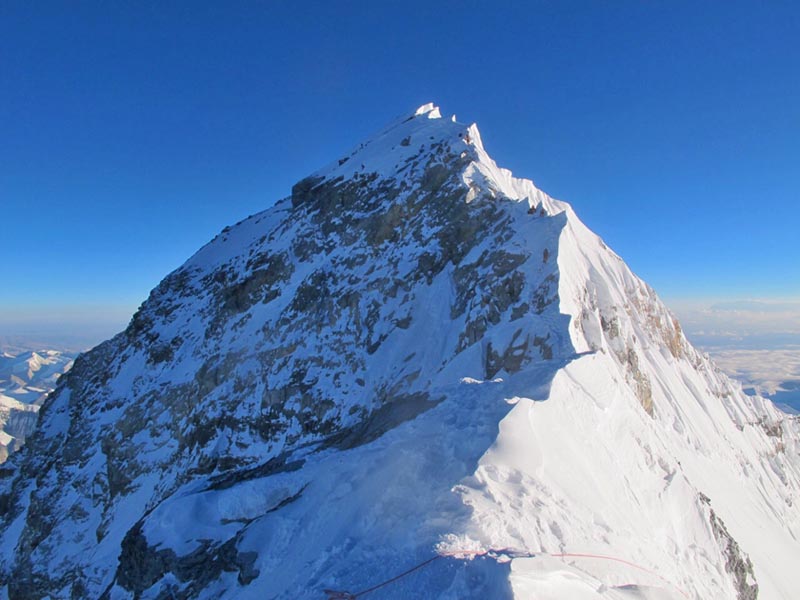NatGeo weather stations on Everest
- Five weather stations to be installed along the climbing route, on roof of the world
Rajan Pokhrel
Kathmandu, April 11
National Geographic Society is all set to establish automatic weather stations on Mt Everest this spring season as part of its multi-year, partnered initiative to increase understanding of extreme environmental conditions and the dynamics of Earth’s changing climate, starting with high-mountain systems.
According to government officials involved in issuing permits for the scientific research, NatGeo has been permitted to instal five automatic weather stations at different elevations along the climbing route and on the roof of the world. It has also been issued permits for on-site meteorological experiments.
Bishnu Prasad Shrestha, under-secretary at the Department of National Parks and Wildlife Conservation, said the NatGeo team had already left for the Everest expedition to carry out research on weather, atmospheric conditions and changing climate by placing weather stations in the high altitude areas to gather data for the improvement of large-scale climate and weather models. “As per their plan, satellite-link technology will share near-real-time information about conditions on the mountain with scientists, regional managers and climbers,” he added.
Department of Hydrology and Meteorology Director General Sarju Kumar Baidhya said NatGeo inked a pact with the DHM to share near-real-time data for climate research and weather conditions.
According to NatGeo’s research plan seen by this daily, it is going to carry out a broad scientific assessment of — and expedition to — Mt Everest and the Solukhumbu region, working closely with Nepali partners.
The NatGeo expedition will collect samples for scientific research on current and historical climate patterns. The research will use remotely sensed images to improve mapping of the glacial extent to better understand changing environmental conditions.
“A critical component of the NatGeo initiative is using scientific data, local collaboration and knowledge gathered through the expedition to empower communities threatened by changing climates to develop regional solutions while it plans to share all data and results fully and to provide grants to support local projects on community adaptation to climate change.”
To understand the complexities of a high-mountain environment, the team will collect ice core, surface snow and water samples at regular intervals along the climbing route and at or near the summit. “It will enhance our understanding of changes in climate, water availability, atmospheric chemistry, glacier stability and biology at high elevations.”
To measure the glacial extent and stability, the research will use the terrestrial and remote sensing technologies to map the main aspects of Himalayan glaciers (present and past extent, thickness, mass balance and seasonal variability in snow and rain accumulation) to elucidate glacier stability during changing climate states. “These data will provide insights into planning for future flooding and water availability downslope.”
During the research, rock samples, both exposed and below ice cover, from lower elevations up to the Everest summit will provide a record of the historical presence or absence of ice cover while sediment samples from moraines and lakes from Lukla to base camp will reveal glacial termini locations and soil history, according to officials.
Besides, NatGeo has also partnered with the Department of Geology and the Department of Botany of Tribhuvan University to study the aspects of extremophiles and biology, Prof Bhupa Prasad Dhamala, executive director at TU’s Centre for International Relations, said.
“Examination of rock, lake sediment, snow, firn, and ice samples for biological evidence, including eDNA, will add to understanding of the range of life that can survive in extreme environments.”
According to the Department of Tourism, NatGeo has obtained permits for a five-member Everest expedition led by scientist Baker Perry and a 15-member team led by Alexander Tait on Mt Nuptse. North Face athletes Peter Athans, Dawa Yangzum Sherpa, scientists including Paul Mayeskwi, Eric Daft, Martin Edstrom and Christopher Milbern are also part of the research expedition.






